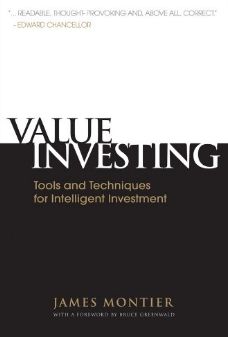In his book – Value Investing: Tools and Techniques for Intelligent Investment, James Montier discusses the dangers of diversification. Here’s an excerpt from the book:
If religion has been the cause of most wars, then ‘diversification’ lies close to the heart of many financial disasters. All too often, too narrow a perspective is taken when thinking about diversification. Investors appear to forget that risk is endogenous (like poker) rather than exogenous (like roulette).
In the equity world, diversification is often taken to the other extreme. The average US mutual fund holds anywhere between 100 and 160 stocks! The only explanation for so many holdings must be the obsession with the relative performance derby (where tracking error is all that matters). This is one of the key sources of poor performance.
• Much damage in the world of finance has been committed in the name of diversification. For instance, LTCM thought it was ‘diversified’ but all its positions were effectively ‘convergence’ trades. Modern risk management seems to have embedded similar flaws into its structure. All too often, the use of short histories of trailing data provides the illusion of safety.
• The most recent crisis once again has the fingerprints of naive diversification all over it. No one appeared to give any thought to the unspoken risk that the USA might just witness a nationwide housing market downturn. Greenspan observed that real estate was ‘especially ill-suited to develop into a bubble’, blatantly ignoring the evidence provided by Japan and the UK.
• In the wonderful world of equities, diversification is taken to the other extreme. The average US mutual fund holds somewhere between 100 and 160 stocks. This is madness. Holding around 30–40 stocks will provide you with the vast majority of the benefits of diversification. Holding more stocks is simply a reflection of the relative performance derby, where the all-consuming concerns are tracking error and career risk.
• New research from Cohen et al. shows that the ‘best ideas’ (defined as the positions where the manager is most at odds with the index weight) actually generate significant returns (over 19% p.a. between 1991 and 2005) against a market return of 12% p.a. This suggests that the generally poor performance of active managers is a function of the focus on relative performance.
• Physics envy is rife in finance. The need to reduce everything to a number bedevils our industry. Much like risk, diversification can’t be simply summed up into a number. There is no ‘optimal’ number of stocks to hold. Investors would be well advised to scrap their optimizers and instead aim for what Keynes described as ‘a balanced position, i.e. a variety of risks in spite of individual holdings being large, and if possible opposed risk’.
For all the latest news and podcasts, join our free newsletter here.
Don’t forget to check out our FREE Large Cap 1000 – Stock Screener, here at The Acquirer’s Multiple:




